- Home
- Larry Niven
Man-Kzin Wars 25th Anniversary Edition
Man-Kzin Wars 25th Anniversary Edition Read online
THE MAN-KZIN WARS SERIES
Created by Larry Niven
The Man-Kzin Wars
The Houses of the Kzinti
Man-Kzin Wars V
Man-Kzin Wars VI
Man-Kzin Wars VII
Choosing Names: Man-Kzin Wars VIII
Man-Kzin Wars IX
Man-Kzin Wars X: The Wunder War
Man-Kzin Wars XI
Man-Kzin Wars XII
Man-Kzin Wars XIII
Man-Kzin Wars XIV (forthcoming)
The Man-Kzin Wars 25th Anniversary Edition
The Best of All Possible Wars
Destiny's Forge by Paul Chafe
Also by Larry Niven
Fallen Angels
(with Jerry Pournelle & Michael Flynn)
THE MAN-KZIN WARS 25th ANNIVERSARY EDITION
This is a work of fiction. All the characters and events portrayed in this book are fictional, and any resemblance to real people or incidents is purely coincidental.
Copyright © 2013 by Larry Niven
All rights reserved, including the right to reproduce this book or portions thereof in any form.
A Baen Books Original
Baen Publishing Enterprises
P.O. Box 1403
Riverdale, NY 10471
www.baen.com
ISBN: 978-1-4516-3900-1
Cover art by Stephen Hickman
First Baen printing, June 2013
Distributed by Simon & Schuster
1230 Avenue of the Americas
New York, NY 10020
Library of Congress Cataloging-in-Publication Data
Niven, Larry.
The Man-Kzin Wars 25th anniversary edition / created by Larry Niven ; with Poul Anderson and Dean Ing. -- 25th anniversary edition.
pages cm
Includes bibliographical references and index.
ISBN 978-1-4516-3900-1 (trade pb : alk. paper)
I. Anderson, Poul, 1926-2001. II. Ing, Dean. III. Title.
PS3564.I9M36 2013
813'.54--dc23
2013005968
Printed in the United States of America
10 9 8 7 6 5 4 3 2 1
INTRODUCTION
BY LARRY NIVEN
* * *
MEMOIR
From June 1988 to January 2013
When I first said, “No! Known Space is mine,” I was craning around to talk to Jim Baen in the back seat of our car. Marilyn was driving. Jim and I had already done a similar thing for Ace Books, opening up the Magic Goes Away universe to other writers. Now he was pressuring me to open the Known Space worlds. I thought it over, then added, “We can open the Man-Kzin Wars. I don’t do war stories.”
I didn’t have a plan then, exactly, but I had hopes.
First: I had to hope that other writers would find it intriguing or even lucrative to work in my Known Space universe. To sweeten the deal, I offered to pay the writers all of the advance money and wait until the advance was paid out. Then I’d start earning my cut.
Second: I hoped they’d do well by my fictional universe. They did. Mostly they came through spectacularly. It bothered me when I had to reject a story or two, one for violating basic assumptions, one for being dull. I shouldn’t have worried. Jim got other writers to collaborate on turning the duds into something worthwhile.
Third: I’d said everything I knew to say about that period in the Known Space universe. I hoped others’ work in the field would re-inspire me.
Over these past twenty-five years I’ve added stories to the Man-Kzin Wars aspect of the Known Space universe. I haven’t had a story in every volume, but there have been several. For a while it seemed I was the only one who could write anything short in this universe. It’s been a kind of slow, long range conversation with a gathering horde of other writers.
Poul Anderson’s story in this first volume, “Iron”, gives a wonderful overview of Tiamat, the terraformed asteroid in Alpha Centauri’s Serpent Swarm. In fact “Iron” is a wonderful overview of Known Space, with characters from all over that universe. Other writers have found Tiamat and Wunderland to be wonderful settings for their stories.
Dean Ing’s “Cathouse” introduced archaic, sapient Kzinti females. Other writers have taken up that thread, which I had somewhat neglected.
Donald Kingsbury invented the Jotoki slaves, and several of us have added to their history. It wasn’t my idea to write that the Kzinti stole their ship technology from the Jotoki.
Several authors have written of the Kzinti telepaths, which I had neglected. I added Shasht (or Burrowing Murder, or Fafnir) to the canon, a human-acquired world where Kzinti stayed behind to become the fishing industry and the police.
I haven’t had to interfere very often.
Jean Lamb’s “Galley Slave” went hand to hand with a Kzin; I made her give her a better weapon.
Hal Colebatch wrote many stories in the series, including one whole volume. In his second story he made a mistake I’ve made too: he started with an ending and stuck to it after the story had veered. I told him to throw away the last half, and then I outlined a different finish. He could have told me to jump off a cliff. But he wrote it—and wrapped up the tale of the Angel’s Pencil (in “the Warriors”) and left me a slot for Sheathclaws, a world of Kzinti and human telepaths cut off from human space by an arm of the Patriarchy.
Matthew Joseph Harrington writes of a human woman turned protector, Peace, whose brilliant banditry has seriously affected Man-Kzin history. Peace’s manipulations seem to have created the Kdaptist Heresy (first seen during Ringworld).
So here’s the first volume of the Man-Kzin War series, which currently number thirteen volumes. I hope you’ll enjoy the stories and go on to read many more.
INTRODUCTION
BY STEPHEN HICKMAN
* * *
The strongest impression that comes to mind on this 25th anniversary of the first Man-Kzin Wars book is “Holy (beep!), it can’t be twenty-five years, can it!?” We’re only up to volume XIV, after all, hmmm . . .
Consequently, my thoughts on the origins of the first covers are a bit hazy (a good thing, as this will make these reminiscences mercifully brief), but such as they are, these are my impressions—
I remember thinking, when Mr. Jim Baen was telling me that this was going to be a series (we spoke on the phone in those days) that I would do better not to read the stories, but to go with whatever I could conjure up in my imagination—I had done covers for several series before this, and some of the weakest of my efforts came from being constrained to keep too closely to the subject material. Also, I knew that Jim had no objection whatsoever to ‘illustrating the metaphor’, quite the contrary, in fact. Come to think of it, I may have been the one to have first mentioned that phrase to Jim.
So I made up a scene with a Kzin crew in the control room of a spacecraft, and for good measure designed a title logo and border treatment. This latter was to try and prevent the drastic cropping that tends to occur with Baen covers (ahem)—and besides that, it established a unique and distinctive look for the series.
This evidently was successful as I got a call from Jim after the initial presentation at the sales meeting, where the cover apparently received a strongly positive reaction from the buyers. Getting positive feedback from a publisher is unheard-of: in my entire previous career I had received only one such call (also from Jim, in fact) about a cover, to put this in perspective. So I was a bit surprised, but really jazzed about the whole series project.
I finished up that first cover very carefully—I had sent in a slide of the mostly-finished cover for the sales meeting, where the pilot looked like a white tiger. I was working in a
crylic at the time for SF subjects, and it’s very easy to make drastic mistakes with an acrylic painting. Easy for me to makes mistakes with acrylic, I mean to say.
For the second cover, I made up something I thought might out-do the first one, and so on for the third . . .
Out of curiosity, I read one of the stories in the second volume, and was startled to recognize in it the scene I had done for the first cover—wow, I was ahead of deadline by a whole book!
Fast forward to cover VIII, and Jim asks me to please not paint in the title and border any more, as this is giving him headaches trying to fit in the names of the authors. This is a relief to me as this adds considerably to the workload, and incidentally reduces the chances of selling the painting to a collector effectively to zero. Also, I had become fed up once and for all with acrylics as a viable medium (‘liquid linoleum’, as an artist friend of mine refers to it), and so cover VIII was the first I did in oil color.
Cover VIII was also the last I did as one of my own ideas— when M-K IX came along I was asked if I would please start reading the stories, and select a scene that actually had something to do with the writing in the book. I found a great scene from a story by Hal Colebatch titled “His Sergeant’s Honor,” and painted that for the cover. I liked the way it turned out, and was relieved, as I discovered, not to have the complete responsibility for the cover image on my own shoulders.
And, much to my enjoyment, I have been conscientiously reading the stories ever since—of all the anthologies I have ever discovered in fifty years of reading SF, the Man-Kzin Wars series is easily the most consistently brilliant and well-written. As such, it has been the most challenging series of covers I have ever tackled—certainly the most rewarding in terms of having covers I can be happy with.
The stories in M-K XIV are great, by the way—definitely check it out!
THE
WARRIORS
BY
LARRY NIVEN
THE WARRIORS
“I’m sure they saw us coming,” the Alien Technologies Officer persisted. “Do you see that ring, sir?”
The silvery image of the enemy ship almost filled the viewer. It showed as a broad, wide ring encircling a cylindrical axis, like a mechanical pencil floating inside a platinum bracelet. A finned craft projected from the pointed end of the axial section. Angular letters ran down the axis, totally unlike the dots-and-commas of Kzinti script.
“Of course I see it,” said the Captain.
“It was rotating when we first picked them up. It stopped when we got within two hundred thousand miles, and it hasn’t moved since.”
The Captain flicked his tail back and forth, gently, thoughtfully, like a pink lash. “You worry me,” he commented. “If they know we’re here, why haven’t they tried to get away? Are they so sure they can beat us?” He whirled to face the A-T Officer. “Should we be running?”
“No, sir! I don’t know why they’re still here, but they can’t have anything to be confident about. That’s one of the most primitive spacecraft I’ve ever seen.” He moved his claw about on the screen, pointing as he talked.
“The outer shell is an iron alloy. The rotating ring is a method of imitating gravity by using centripetal force. So they don’t have the gravity planer. In fact they’re probably using a reaction drive.”
The Captain’s catlike ears went up. “But we’re lightyears from the nearest star!”
“They must have a better reaction drive than we ever developed. We had the gravity planer before we needed one that good.”
There was a buzzing sound from the big control board. “Enter,” said the Captain.
The Weapons Officer fell up through the entrance hatch and came to attention, “Sir, we have all weapons trained on the enemy.”
“Good.” The Captain swung around. “A-T, how sure are you that they aren’t a threat to us?”
The A-T Officer bared sharply pointed teeth. “I don’t see how they could be, sir.”
“Good. Weapons, keep all your guns ready to fire, but don’t use them unless I give the order. I’ll have the ears of the man who destroys that ship without orders. I want to take it intact.”
“Yes, sir.”
“Where’s the Telepath?”
“He’s on his way, sir. He was asleep.”
“He’s always asleep. Tell him to get his tail up here.”
The Weapons Officer saluted, turned, and dropped through the exit hole.
“Captain?”
The A-T Officer was standing by the viewer, which now showed the ringed end of the alien ship. He pointed to the mirror-bright end of the axial cylinder. “It looks like that end was designed to project light. That would make it a photon drive, sir.”
The Captain considered. “Could it be a signal device?”
“Urrrrr . . . Yes, sir.”
“Then don’t jump to conclusions.”
Like a piece of toast, the Telepath popped up through the entrance hatch. He came to exaggerated attention. “Reporting as ordered, sir.”
“You omitted to buzz for entrance.”
“Sorry, sir.” The lighted viewscreen caught the Telepath’s eye and he padded over for a better look, forgetting that he was at attention. The A-T Officer winced, wishing he were somewhere else.
The Telepath’s eyes were violet around the edges. His pink tail hung limp. As usual, he looked as if he were dying for lack of sleep. His fur was flattened along the side he slept on; he hadn’t even bothered to brush it. The effect was far from the ideal of a Conquest Warrior as one can get and still be a member of the Kzinti species. The wonder was that the Captain had not yet murdered him.
He never would, of course. Telepaths were too rare, too valuable, and—understandably—too emotionally unstable. The Captain always kept his temper with the Telepath. At times like this it was the innocent bystander who stood to lose his rank or his ears at the clank of a falling molecule.
“That’s an enemy ship we’ve tracked down,” the Captain was saying. “We’d like to get some information from them. Would you read their minds for us?”
“Yes, sir.” The Telepath’s voice showed his instant misery, but he knew better than to protest. He left the screen and sank into a chair. Slowly his ears folded into tight knots, his pupils contracted, and his ratlike tail went limp as flannel.
The world of the eleventh sense pushed in on him.
He caught the Captain’s thought; “. . . sloppy civilian get of a sthondat . . .” and frantically tuned it out. He hated the Captain’s mind. He found other minds aboard ship, isolated and blanked them out one by one. Now there were none left. There was only unconsciousness and chaos.
Chaos was not empty. Something was thinking strange and disturbing thoughts.
The Telepath forced himself to listen.
Steve Weaver floated bonelessly near a wall of the radio room. He was blond, blue-eyed, and big, and he could often be seen as he was now, relaxed but completely motionless, as if there were some very good reason why he shouldn’t even blink. A streamer of smoke drifted from his left hand and crossed the room to bury itself in the air vent.
“That’s that,” Ann Harrison said wearily. She flicked four switches in the bank of radio controls. At each click a small light went out.
“You can’t get them?”
“Right. I’ll bet they don’t even have a radio.” Ann released her chair net and stretched out into a five-pointed star. “I’ve left the receiver on, with the volume up, in case they try to get us later. Man, that feels good!” Abruptly she curled into a tight ball. She had been crouched at the communications bank for more than an hour. Ann might have been Steve’s twin; she was almost as tall as he was, had the same color hair and eyes, and the flat muscles of conscientious exercise showed beneath her blue falling jumper as she flexed.
Steve snapped his cigarette butt at the air conditioner, moving only his fingers. “Okay. What have they got?”
Ann looked startled. “I don’t know.”
&n
bsp; “Think of it as a puzzle. They don’t have a radio. How might they talk to each other? How can we check on our guesses? We assume they’re trying to reach us, of course.”
“Yes, of course.”
“Think about it, Ann. Get Jim thinking about it, too.” Jim Davis was her husband that year, and the ship’s doctor full time. “You’re the girl most likely to succeed. Have a smog stick?”
“Please.”
Steve pushed his cigarette ration across the room. “Take a few. I’ve got to go.”
The depleted package came whizzing back. “Thanks,” said Ann.
“Let me know if anything happens, will you? Or if you think of anything.”
“I will. And fear not, Steve, something’s bound to turn up. They must be trying just as hard as we are.”
Every compartment in the personnel ring opened into the narrow doughnut-shaped hall which ran around the ring’s forward rim. Steve pushed himself into the hall, jockeyed to contact the floor, and pushed. From there it was easy going. The floor curved up to meet him, and he proceeded down the hall like a swimming frog. Of the twelve men and women on the Angel’s Pencil, Steve was best at this; for Steve was a Belter, and the others were all flatlanders, Earthborn.
Ann probably wouldn’t think of anything, he guessed. It wasn’t that she wasn’t intelligent. She didn’t have the curiosity, the sheer love of solving puzzles. Only he and Jim Davis—
He was going too fast, and not concentrating. He almost crashed into Sue Bhang as she appeared below the curve of the ceiling.

 The Integral Trees - Omnibus
The Integral Trees - Omnibus A World Out of Time
A World Out of Time Crashlander
Crashlander The World of Ptavvs
The World of Ptavvs Ringworld
Ringworld Juggler of Worlds
Juggler of Worlds The Ringworld Throne
The Ringworld Throne The Magic Goes Away Collection: The Magic Goes Away/The Magic May Return/More Magic
The Magic Goes Away Collection: The Magic Goes Away/The Magic May Return/More Magic A Gift From Earth
A Gift From Earth Escape From Hell
Escape From Hell Larry Niven’s Man-Kzin Wars - VII
Larry Niven’s Man-Kzin Wars - VII Rainbow Mars
Rainbow Mars Larry Niven’s Man-Kzin Wars - V
Larry Niven’s Man-Kzin Wars - V Larry Niven’s Man-Kzin Wars - I
Larry Niven’s Man-Kzin Wars - I Destroyer of Worlds
Destroyer of Worlds Man-Kzin Wars XIV
Man-Kzin Wars XIV Treasure Planet
Treasure Planet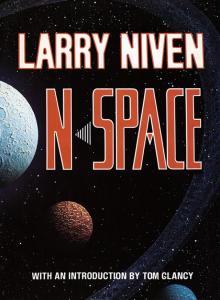 N-Space
N-Space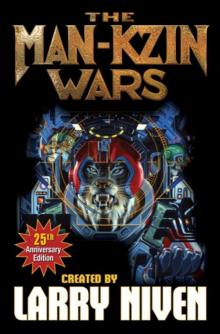 Man-Kzin Wars 25th Anniversary Edition
Man-Kzin Wars 25th Anniversary Edition The Ringworld Engineers
The Ringworld Engineers Larry Niven’s Man-Kzin Wars - XII
Larry Niven’s Man-Kzin Wars - XII The Magic May Return
The Magic May Return Tales of Known Space: The Universe of Larry Niven
Tales of Known Space: The Universe of Larry Niven The Magic Goes Away
The Magic Goes Away Larry Niven’s Man-Kzin Wars - III
Larry Niven’s Man-Kzin Wars - III Larry Niven’s Man-Kzin Wars - VI
Larry Niven’s Man-Kzin Wars - VI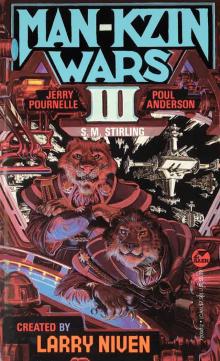 Man-Kzin Wars III
Man-Kzin Wars III Larry Niven’s Man-Kzin Wars - XI
Larry Niven’s Man-Kzin Wars - XI Inferno
Inferno 01-Human Space
01-Human Space Larry Niven’s Man-Kzin Wars - XIV
Larry Niven’s Man-Kzin Wars - XIV The Long Arm of Gil Hamilton
The Long Arm of Gil Hamilton Ringworld's Children
Ringworld's Children Man-Kzin Wars XII
Man-Kzin Wars XII Scatterbrain
Scatterbrain Man-Kzin Wars 9
Man-Kzin Wars 9 Man-Kzin Wars XIII
Man-Kzin Wars XIII Flatlander
Flatlander Man-Kzin Wars V
Man-Kzin Wars V Destiny's Forge
Destiny's Forge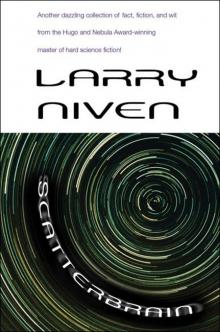 Scatterbrain (2003) SSC
Scatterbrain (2003) SSC The Time of the Warlock
The Time of the Warlock Choosing Names: Man-Kzin Wars VIII
Choosing Names: Man-Kzin Wars VIII Larry Niven's Man-Kzin Wars II
Larry Niven's Man-Kzin Wars II Man-Kzin Wars IX (Man-Kzin Wars Series Book 9)
Man-Kzin Wars IX (Man-Kzin Wars Series Book 9) Choosing Names: Man-Kzin Wars VIII (Man-Kzin Wars Series Book 8)
Choosing Names: Man-Kzin Wars VIII (Man-Kzin Wars Series Book 8) Treasure Planet - eARC
Treasure Planet - eARC The Draco Tavern
The Draco Tavern Larry Niven’s Man-Kzin Wars - The Houses of the Kzinti
Larry Niven’s Man-Kzin Wars - The Houses of the Kzinti The Fourth Profession
The Fourth Profession Betrayer of Worlds
Betrayer of Worlds Convergent Series
Convergent Series Starborn and Godsons
Starborn and Godsons Protector
Protector Larry Niven’s Man-Kzin Wars - IV
Larry Niven’s Man-Kzin Wars - IV Man-Kzin Wars IV (Man-Kzin Wars Series Book 4)
Man-Kzin Wars IV (Man-Kzin Wars Series Book 4) The Legacy of Heorot
The Legacy of Heorot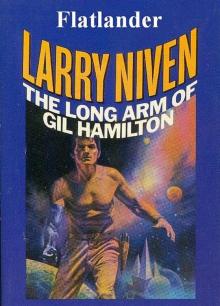 03-Flatlander
03-Flatlander Larry Niven’s Man-Kzin Wars - XIII
Larry Niven’s Man-Kzin Wars - XIII Destiny's Road
Destiny's Road Fate of Worlds
Fate of Worlds Beowulf's Children
Beowulf's Children 04-Protector
04-Protector The Flight of the Horse
The Flight of the Horse Man-Kzin Wars IV
Man-Kzin Wars IV The Moon Maze Game dp-4
The Moon Maze Game dp-4 The California Voodoo Game dp-3
The California Voodoo Game dp-3 07-Beowulf Shaeffer
07-Beowulf Shaeffer Ringworld's Children r-4
Ringworld's Children r-4 The Man-Kzin Wars 05
The Man-Kzin Wars 05 The Man-Kzin Wars 12
The Man-Kzin Wars 12 Lucifer's Hammer
Lucifer's Hammer The Seascape Tattoo
The Seascape Tattoo The Moon Maze Game
The Moon Maze Game Man-Kzin Wars IX
Man-Kzin Wars IX All The Myriad Ways
All The Myriad Ways More Magic
More Magic 02-World of Ptavvs
02-World of Ptavvs ARM
ARM The Ringworld Engineers (ringworld)
The Ringworld Engineers (ringworld) Burning Tower
Burning Tower The Man-Kzin Wars 06
The Man-Kzin Wars 06 The Man-Kzin Wars 03
The Man-Kzin Wars 03 Man-Kzin Wars XIII-ARC
Man-Kzin Wars XIII-ARC The Hole Man
The Hole Man The Warriors mw-1
The Warriors mw-1 The Houses of the Kzinti
The Houses of the Kzinti The Man-Kzin Wars 07
The Man-Kzin Wars 07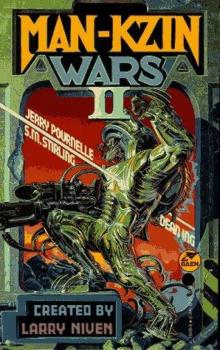 The Man-Kzin Wars 02
The Man-Kzin Wars 02 The Burning City
The Burning City At the Core
At the Core The Trellis
The Trellis The Man-Kzin Wars 01 mw-1
The Man-Kzin Wars 01 mw-1 The Man-Kzin Wars 04
The Man-Kzin Wars 04 The Man-Kzin Wars 08 - Choosing Names
The Man-Kzin Wars 08 - Choosing Names Dream Park
Dream Park How the Heroes Die
How the Heroes Die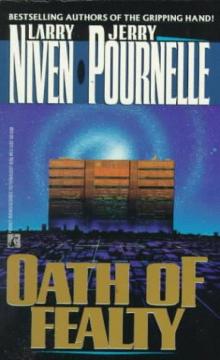 Oath of Fealty
Oath of Fealty The Smoke Ring t-2
The Smoke Ring t-2 06-Known Space
06-Known Space Destiny's Road h-3
Destiny's Road h-3 Flash crowd
Flash crowd The Man-Kzin Wars 11
The Man-Kzin Wars 11 The Best of Galaxy’s Edge 2013-2014
The Best of Galaxy’s Edge 2013-2014 The Ringworld Throne r-3
The Ringworld Throne r-3 A Kind of Murder
A Kind of Murder The Barsoom Project dp-2
The Barsoom Project dp-2 Building Harlequin’s Moon
Building Harlequin’s Moon The Gripping Hand
The Gripping Hand The Leagacy of Heorot
The Leagacy of Heorot Red Tide
Red Tide Choosing Names mw-8
Choosing Names mw-8 Inconstant Moon
Inconstant Moon The Man-Kzin Wars 10 - The Wunder War
The Man-Kzin Wars 10 - The Wunder War Fate of Worlds: Return From the Ringworld
Fate of Worlds: Return From the Ringworld Ringworld r-1
Ringworld r-1 05-A Gift From Earth
05-A Gift From Earth The Integral Trees t-1
The Integral Trees t-1 Footfall
Footfall The Mote In God's Eye
The Mote In God's Eye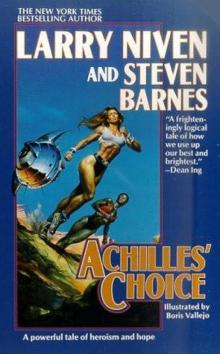 Achilles choice
Achilles choice The Man-Kzin Wars 01
The Man-Kzin Wars 01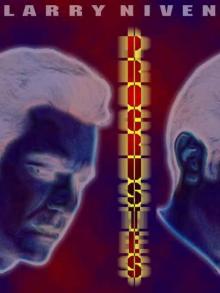 Procrustes
Procrustes The Man-Kzin Wars 03 mw-3
The Man-Kzin Wars 03 mw-3 The Goliath Stone
The Goliath Stone The Man-Kzin Wars 09
The Man-Kzin Wars 09